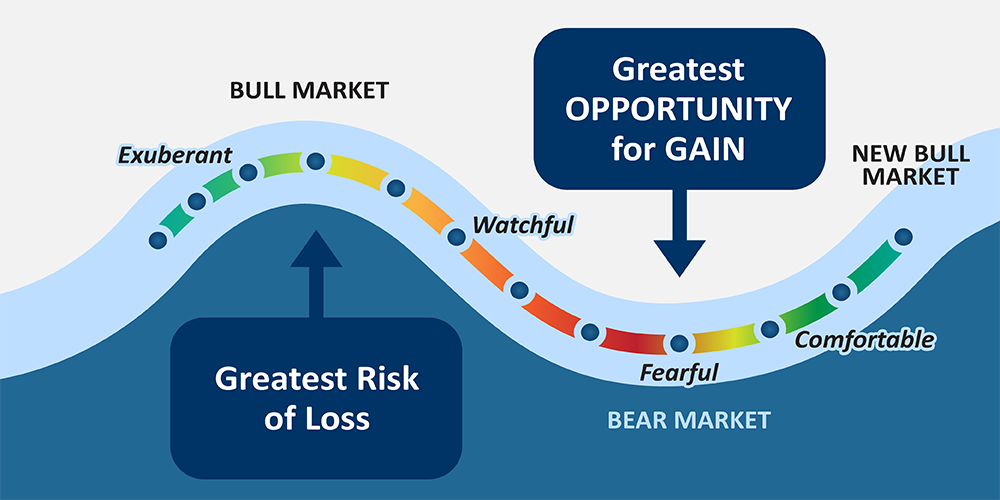From Insights to Impact: The Future of Behavioral Science in 2025
To the DNA Community: As the doors to 2025 open, I find myself reflecting on the remarkable year we just shared.
Our purpose-driven software and behavioral experts work together to meet your business needs best.
Our app lets you toggle between insights most relevant to the employee or client experience.
Key behavioral insights can be integrated into your favorite web tools and custom applications.
Our behavioral experts can help you get the most out of our technology through training programs, customized workshops, and more.
Register for one of our online events to get focused guidance on the practical uses of our platform and have your questions answered.
Learn how we use psychometric measurement to accurately predict a person’s personality traits for identifying their behavioral style and money attitudes.
Reinforce your understanding of how BeSci Tech can create a life-changing shift in the way people think, make decisions, run their businesses, and relate to others.
Get a little background on our business and take a peek at the behavioral style reports of our team members!
Got questions? We're available by phone, email, or chat to discuss any of our behavioral solutions.

You know that it’s important, but what exactly is psychological safety and how do you create it in your business? Let’s find out!
One of our primary goals as a company is to help DNA Behavior users create a psychologically safe environment for both employees and clients. We realize, however, that the concept can feel a little abstract, especially as it relates to the business world. So, we’ve broken it down into practical terms in the question-and-answer format below.
FREE VIDEO SERIES: Fostering Psychological Safety
What is the meaning of psychological safety?
Psychological safety is what is experienced by members of the workforce when the organizational climate and policies support psychological health. It exists when every member of your team feels safe to take risks, express their ideas, voice concerns, ask questions, and admit mistakes without fear of any negative consequences. It also happens to be the optimal mental state for getting peak performance and innovation!
What is another word for psychological safety?
Psychological safety is a feeling that can’t exist without trust, but the word “trust” doesn’t really cover it. It’s more about the self-expression that can happen when individuals are encouraged to be true to themselves and respected for their natural talents. Perhaps it is best explained by these words: understanding, acceptance, empathy, encouragement, consideration, and growth. Understanding has to come first, which is why our behavioral insights are a crucial piece of the puzzle.
If you’d like to elevate the employee experience by getting to know and understand the people you work with better, the DNA Natural Behavior Discovery Process is a great place to start. And you can check it out for free!
What are the 4 stages of psychological safety?
As an organization works to create a psychologically safe environment, employees will typically go through four distinct stages on their journey. In terms of establishing a sustainable workforce, these stages represent growth in an individual’s comfort level as well as their contributions to your business.
Inclusion Safety
Learner Safety
Contributor Safety
Challenger Safety
Why is psychological safety important at work?
When employees don’t feel psychologically safe, they won’t give you their best effort. They are more likely to be unengaged cogs in the wheel, just doing the minimum to get paid. So, psychological safety is key if you want a business filled with fully engaged, productive employees who are in it for the long run.
What is an example of psychological safety?
Psychological safety is a mental state, so the signs of its existence have to be looked for in the observable behaviors and attitudes of the people you work with.
Employees love to come to work.
They are confident and engaged.
People are themselves.
Ideas are openly shared.
Leadership is supportive.
Open dialog is encouraged.
What is not an element of psychological safety?
Psychological safety is not about blind acceptance of everyone and everything they do, just to keep them content. It’s more about appreciating differences in approach and opinions and then fostering respectful and open communication.
What does a psychologically unsafe workplace look like?
Telltale signs that point to a lack of psychological safety are often missed because they are so commonly experienced. Look for the following:
What builds psychological safety?
Psychological safety is built by making it a part of your company culture. Leaders in particular can help create a more positive and productive atmosphere by the way they manage their teams. By focusing on the following, employees will know they are valued and that their voice matters.
Build trust through authenticity
Fuel growth with opportunities
Value every perspective
Draw on each individual’s natural talents – Our Discovery Process will reveal what those are!
Foster a culture of open dialogue
What undermines psychological safety?
Without a conscious focus on the psychological safety of your organization, a toxic environment could emerge that undermines your goals. When people don’t feel valued, it naturally affects their mental health along with their work performance. Much of the damage to psychological safety is caused by:
Lack of support
Poor communication
Unclear expectations
Unfair punishment
How do you measure psychological safety?
To measure psychological safety, you’ll need to create a feedback culture where people feel safe enough to be candid about their experiences. Some companies utilize pulse questionnaires which can be completed anonymously. Managers might also do routine one-on-one check-ins to gauge psychological safety. While direct feedback is best, major warning signs include:
Decreased productivity
Increased absenteeism and turnover
Decreased engagement
Who is responsible for psychological safety in the workplace?
Psychological safety is a shared responsibility, but it relies heavily on the organizational culture created and emanated by leadership. Managers and senior staff members need to embody the behaviors they want to see across the organization. They should be open, approachable, and never dismissive of ideas, opinions, or feedback.
Is your organization psychologically safe?
Hopefully, we’ve answered many of your questions about psychological safety. If you would like to learn more about creating a psychologically safe workplace, we cover this topic in detail in Is Your Organization Psychologically Safe? And we are always happy to meet with you to discuss your particular situation.

To the DNA Community: As the doors to 2025 open, I find myself reflecting on the remarkable year we just shared.

Our research of S&P 500 execs shows how a CEO’s financial behavior impacts the entire organization…and which traits can dramatically affect the...

For advisors to be successful, they need to be able to manage their “emotional reflex system” when volatile events happen.